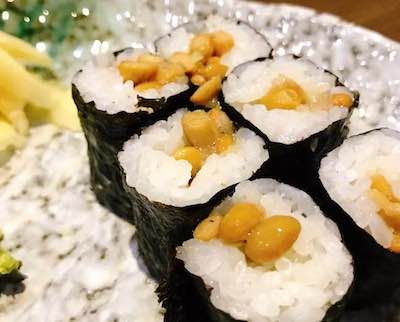We are reader supported. When you purchase through links on our site, we may earn an affiliate commission. Also, as an Amazon affiliate, we earn from qualifying purchases.
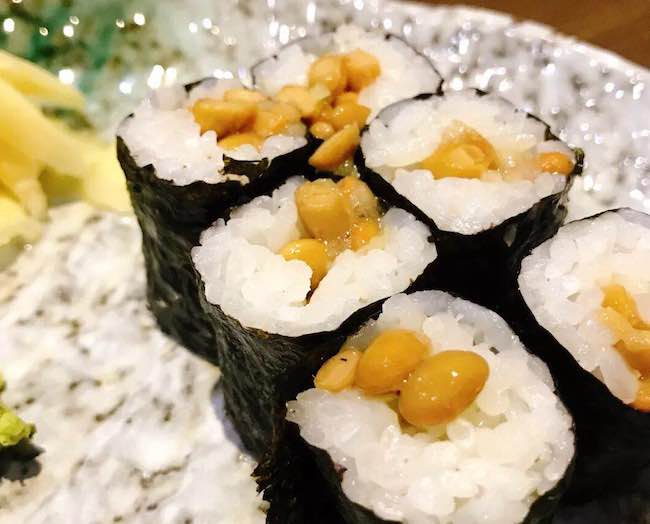
Are you an adventurous eater? I am. Out of my passion for food, I have tried some of the weirdest dishes such as lutefisk in Norway and Huitlacoche in Mexico. Talking about Japanese food, one of the weirdest things I have tried is Natto. Like it or loathe it, but you cannot ignore it if you live in Japan.
It’s difficult to tell the taste or experience of eating Natto in one word. It is a mix of good and gross, which makes it an acquired taste. While most of the people in eastern Japan are crazy about this Asian superfood, westerners mostly find it difficult to tolerate the sight or smell of it.
My rendezvous with Natto was in the form of a Natto maki roll. I went to the sushi joint that I visit often and wanted to try something new this time. I looked at the menu and Natto maki roll caught my fancy. I must admit that I was taken for a surprise at the taste of it but I was determined to give it a try.
I can’t guarantee that you will like the taste of it, but you will definitely expand the horizons of your tastebuds and add a lot of goodness to your body. Here is the easy Natto Maki recipe for you.
Contents
Easy Natto Maki Recipe
This is a traditional sushi roll prepared using a popular Japanese superfood called Natto. To make this roll, you will need the following ingredients:
- Seasoned sushi rice
- 4 tablespoons of natto
- Nori sheet
- Spring onion (finely chopped)
- Sesame seeds
- Wasabi
Instructions
Cook short grain rice in a cooker or pot, and then season the boiled rice with vinegar, sugar, and salt. For detailed instructions, read this article
Place the sushi mat on the working table and put the Nori sheet on it, rough side facing upwards
Take a medium ball of sushi rice and make an even layer on the Nori sheet
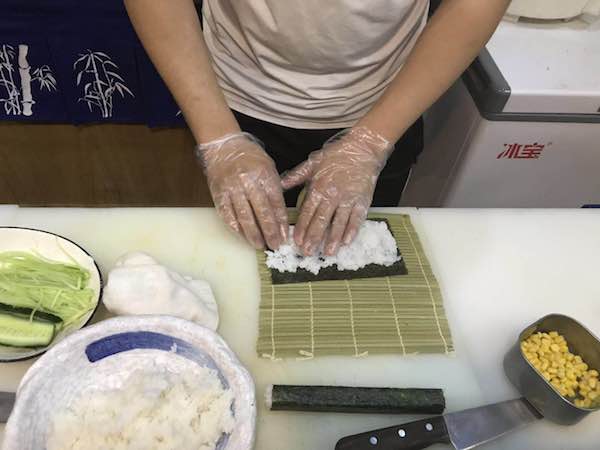
Open a packet of Natto, chop the pieces roughly to make them smaller and add all contents to the mid of the Nori sheet covering the entire length
Sprinkle the finely cut spring onions over Natto to enhance the taste
Lift the bamboo mat close to you and start making a compact roll. Apply gentle pressure as you roll to bind the ingredients together.
Take a few drops of water and seal the edges of the roll. Next, moisten the blade of the knife and cut the roll into 6-8 pieces.
Serve the Natto maki sushi with soy sauce and wasabi to cover the strong flavor.
Pro tip: You can also make an inside-out version of this recipe. After spreading rice on the Nori sheet, sprinkle some sesame seeds and flip it inside out. Then add Natto, green onions, and roll.
Tuna And Natto Hosomaki Sushi Recipe
What you will need:
- Seasoned sushi rice
- 1 Japanese cucumber
- sushi-grade tuna
- 1 box of Natto (fermented soybeans)
- 1 tbsp rice vinegar
- Nori sheets
- Soy sauce
- Wasabi (optional)
- Pickled ginger
Instructions
Cook sushi rice in a cooker or pot, and season it with vinegar, sugar, and salt. Find step-by-step instructions here.
Cut the Japanese cucumber into half from the middle width-wise and then slice both halves to yield 8 long cucumber strips in total.
Now, cut the tuna fish to make thin slices about ¼ to ½ inches thick strips
Take the Natto out of the box and season it with soy sauce or use the seasoning that comes in the box. Mix until it becomes bubbly and slimy
Cut Nori sheet into half and put one half on the working area, rough side facing upwards
Take a medium ball of seasoned sushi rice and spread it evenly on the Nori sheet
Now, arrange tuna pieces, cucumber slices, and Natto in the middle. If the pieces are short, you can add extra at the end
With one swift movement, lift the bamboo mat from one end and make a compact roll to bind everything together
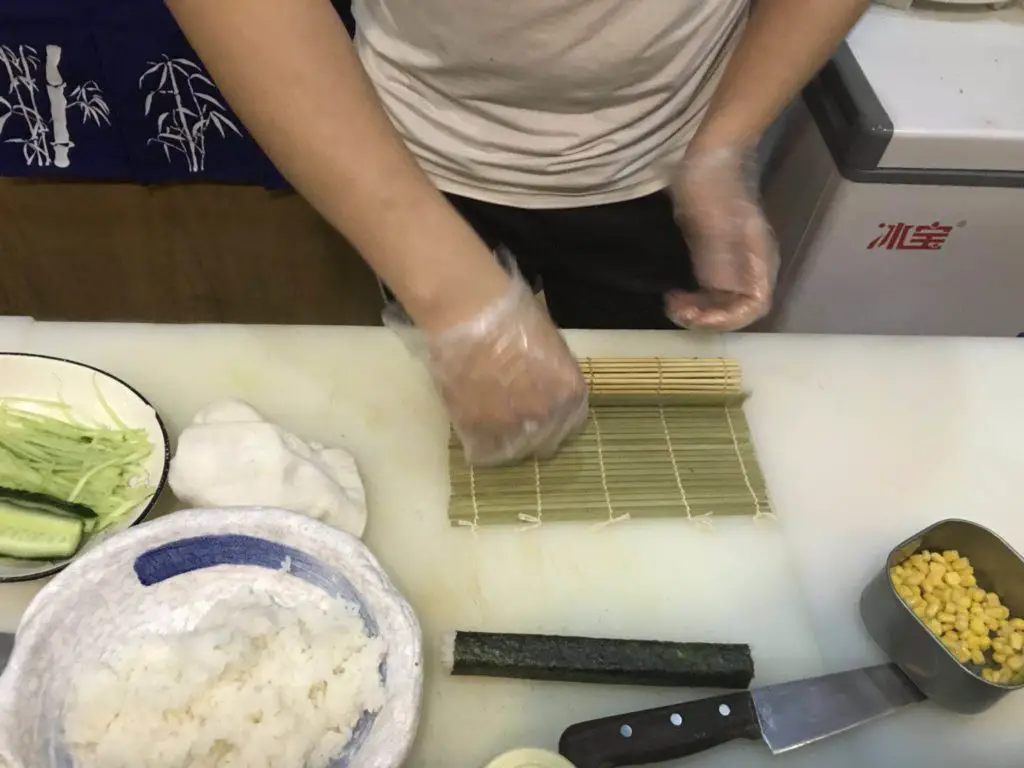
Press the sushi roll gently using your bamboo mat to ensure that the roll gets a decent shape. Moisten the Japanese knife and cut the roll into equal halves, then cut each half into 3 pieces.
Natto Negi Maki Recipe
This is yet another easy and quick to make Natto sushi recipe. Although in this recipe we use small chives, you may replace it with parsley or coriander.
Ingredients
- 2 cups of cooked sushi rice
- 5 strands of small chives
- 1 pack of Natto
- 1 Nori sheet
Instructions
First, cook short grain rice and season it with vinegar, sugar, and salt to prepare seasoned sushi rice
When the sushi rice cools, mix chives with rice as the combination tastes great together
Cut the Nori sheet into half and put it on the table, shiny side facing down
Take a medium ball of sushi rice and spread it over the Nori sheet
Open the box of Natto and use half of the content as fillings. Put them at the center of the rice layer
Lift the bamboo sheet from your end and make compact roll by pressing gently with your fingers
Seal the edges with some water and cut the roll into 6-8 equal pieces. Serve with soy sauce and wasabi
Other Interesting Ways To Enjoy Natto Sushi
Apart from using Natto in a traditional maki roll recipe, it can also be used as a filling in other types of sushi such as a gunkan maki (battleship sushi) and temaki (sushi cone).
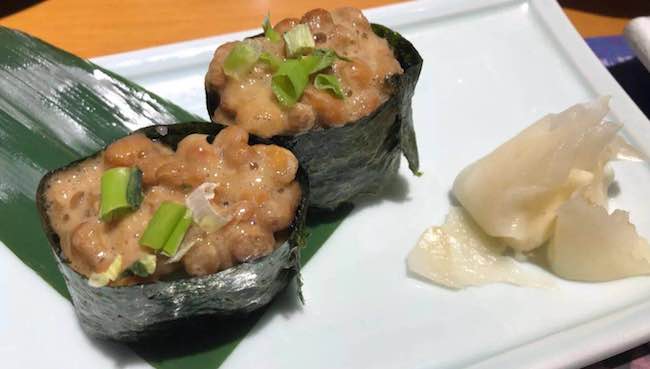
To make gunakn maki, cut out a strip of Nori about 1.5 inches wide. Take a small spoon of seasoned sushi rice and flatten it in your hands to form an oval shape.
Now, wrap the Nori strip around the edges of the sushi rice and stick the ends with a few drops of water. Make sure there enough space on the top of the rice for fillings. Add seasoned Natto on the top and garnish with finely chopped spring onions.
To make Temaki sushi using Natto, cut the Nori sheet into half and toast it slightly. Place the Nori sheet on a working surface, rough side facing upwards.
Take a small portion of sushi rice and apply it in square shape leaving empty spaces below and on the side to make a cone shape. About 2/3 of the Nori sheet should be empty. Sprinkle some toasted sesame seeds on sushi rice.
Now, add seasoned Natto on the sushi rice and garnish with spring onions and cilantro on the top. Now, make a cone shape by rolling the Nori sheet, and seal the edges with a few drops of water.
What Is Natto?

Known as one of the most traditional superfoods of Japan, Natto is steamed soybeans that have been fermented for a few days. A bacteria called natto bacillus helps with the fermentation process and turns it into a delicacy that has an acquired taste.
The soybeans are soft and brown in color, covered with a sticky mucus-like gooey matter. The stickiness is similar to what you find in okra. You would probably not consider eating any other food with that kind of stickiness on it. But for some reason, it is good when it’s on Natto. In fact, it is widely popular as a health food because soybeans become easier to digest when fermented.
The smell of Natto is, however, a disturbing element that may put off some people. It has a pretty strong flavor like that of stinky socks. As some people just can’t tolerate that smell, there are some people who are now considering low-odor or odorless Natto. However, Natto fans argue that smell is an important aspect of the overall experience.
What Is The Right Method To Eat Natto
A typical pack of store-bought Natto will include the fermented soybeans, a pack of soy sauce ‘tare’ and a pack of spicy mustard. The best way to eat Natto is to first mix it up and then add the toppings that are included in the pack to enhance the taste.
Natto tastes great with rice, hence it forms a great filling for easy Natto maki recipe. You may also add extra condiments such as grated pickled radish (daikon), bonito flakes, sliced green onions, and nori seaweed.
A pro tip – If you are a beginner and wish to take your tastebuds for a ride, add a spoon of sesame oil to mask the unpleasant odor. Also, if you don’t want it to be too slimy, avoid mixing Natto too much before adding the condiments. In this way, it will be less sticky.
What Are The Different Types Of Natto
The fermented soybeans can be basically of two different types – itohiki natto and tera natto. Both these types differ in their overall taste and structure. Let’s discuss the characteristics of each below:
Itohiki natto
This is the standard type of natto we know and it is often referred to as stringy. It can be further classified into three types – Marudaizu natto, Hikiwari Natto, and Goto natto.
Marudaizu natto
Marudaizu natto is known as whole-soybeans and they are fermented to become sticky natto. The level of stickiness is determined by the size of natto. If the beans are bigger in size, they are less sticky than the small ones.
If you are trying to appreciate the weird taste of natto, I would recommend that you start with the large beans. Marudaizu natto may also be made of black soybean that is more flavourful than the yellow ones.
The black soybeans usually have soy sauce and wasabi on the top. The topping adds a dash of spiciness to the beans and then feels refreshing when you start chewing. The black natto usually has a weaker smell that does not bother people who don’t like the smell.
Hikiwari Natto
The second type of natto is grounded in nature, and it is basically made by roasting soybeans. Whole soybeans are first ground, peels are removed and then they are boiled. The type of natto provides more surface area for the bacteria to ferment the beans, thus making them the stickiest of all.
Hikiwari natto is also easy to eat for its small size and it tastes comparatively fresher than the marudaizo natto. The level stickiness is higher in this variety and this can be your next step in learning to appreciate the taste of Natto.
Goto Natto
This is the fermented variety of koji, natto, and salt. It takes around one week for this mixture to ferment and taste perfect. At times, gotto natto may be made using less salt and sold under the label ‘Yukiwari Natto’.
Tera Natto
The second type of natto is Tera Natto. Initially, natto was made by monks of the Buddhist temples known as ‘Nassho’ and this is how the superfood got its name. Terra natto is more like the fermented and delicious black soybeans that taste similar to red miso and it is less sticky in nature.
Tera Natto is produced using Koji-mold and then salt is added to it. The mixture is then kept undisturbed for fermentation that takes nearly six months to complete. It may be used in making Natto sushi or added to dishes like miso soup.
How To Make Natto At Home
While you can always purchase a box of Natto from an Asian grocery store near you, there’s nothing like making homemade stuff. Below you will find easy steps to make Natto at home.
Cleaning
First, you need to put all beans in a bowl of water and wash them by rubbing together. Be gentle to ensure that you do not pull out the skin. If the soybeans have soil or debris on the surface, this can have an adverse effect on making Natto. So wash them carefully.
Soaking
The next step is to soak the soybeans in water for about 15 hours. The water temperature should be around 10-15 degrees Celsius. In the summer months, soaking only for 6 hours in water with a temperature of 20-25 degrees Celsius may be enough.
Boiling
When the water temperature is high, just enclose the bowl with a plastic sheet and keep in the refrigerator for 24 hours. It allows the soybeans to expand about four times more than its actual weight. So, 500 grams of soybean may use up about 2 liters of water.
Now boil the soybeans until they become so squashy that you can easily nip them with your fingers. When the fermentation process starts, the soy beans will harden in texture so make sure you boil them well to turn tender. It takes nearly 30 minutes in the pressure cooker to become enough soft.
Preparing the solution
To make the Natto solution like this, you will need to dissolve the Natto starter in water. Take 10 ml of water, pre-boiled and then cool it to room temperature. Now, dissolve 0.1g of Natto starter (1/5th of a small spoon) in water to ferment the soybeans.
Adding Natto solution
Pour the solution like this over the soybeans and mix them well. Keep the solution prepared beforehand so that you can pour it as soon as the beans are boiled. If you let the temperature drop, this may lead to bacterial contamination
Fermentation
Transfer the contents into a food warmer. You may use a proofer like this or the food warming function of the pressure cooker. Let the soybeans sit in the warmer for 24 hours in order to ferment. Try to maintain a favorable temperature of 40 to 45 degrees Celsius while beans are in the warmer.
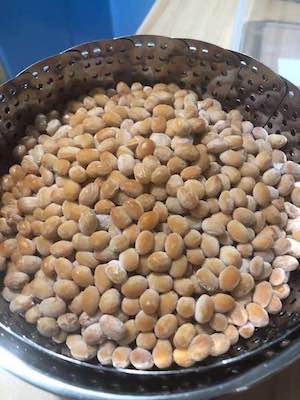
After keeping the beans in the warmer for 24 hours, they will look well fermented. However, the beans will carry an overwhelming ammonia smell at this stage.
Cooling
Allow the fully fermented Natto to cool and mature in the refrigerator. As the beans rest inside the fridge for a day, the amino acid content of soy protein enriches the overall flavor of Natto. Once it becomes fully mature, the flavor of ammonia vanishes. Delicious Natto is ready to serve.

How to properly store fermented Natto
If you do not wish to eat Natto immediately, consider storing it inside the refrigerator. When left outside for a long time in high temperature, the amino acids can break down and cause ammonia to smell. Storing it in the fridge makes it gooey so it’s upon you to decide how long you wish the beans to ferment.
Related Questions
What is the taste of natto
The fermented foods usually have an acquired taste and it may take more time for your tastebuds to acclimatize to Natto. While it is worth acquiring, Natto has a unique, taste, smell, and texture. Although the smell may put off some people, it tastes really good. Mix it with soy sauce and chopped onions to enhance the flavor. It goes well with steamed rice.
Why is natto slimy and sticky
Natto is made by fermenting soybeans with a bacteria named Bacillus. While the fermentation process improves the nutrition content of soybeans, it also develops a unique flavor and texture. It feels sticky and gooey as a result of the fermentation process.
What is the difference between Natto and Tempeh
Both Natto and Tempeh are made of soybeans but they differ a lot in terms of taste and texture. While Natto is sticky, slippery and slimy, tempeh is more like a dense cake. Natto has a slightly bitter taste while tempeh is more earthy and sweet. The former originated in Japan while tempeh traces its roots in Indonesia.
Can you freeze natto?
Yes, you can store Natto for several months in the freezer. However, once it is completely thawed, you must consume it within one week. To store correctly, press a piece of unbleached parchment paper or cheesecloth to retain the moisture. Store in an air tight box and keep inside the refrigerator.
Can you eat too much natto
If you have acquired the taste for Natto, you are lucky because you are giving lots of nutrition to your body along with great food. While Natto sushi is a great way to consume this superfood with rice, I would recommend eating only one-cup serving each day. Anything more than that may have an adverse side effect.
Is Natto safe for pregnant women?
The fermented soybeans contain an active bacteria called Bacillus subtilis so you may wonder whether or not it is safe while pregnant. Well, a study has revealed that pregnant women who consumed Natto frequently gave birth to babies with a lower risk of eczema. Hence, it is not only safe but also good for your baby.

